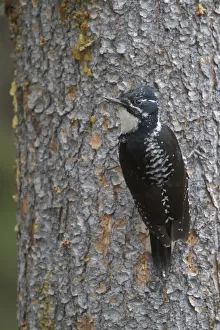Picoides Dorsalis Collection
The American Three-toed Woodpecker (Picoides dorsalis) is a stunning bird species found in various regions of North America
All Professionally Made to Order for Quick Shipping
The American Three-toed Woodpecker (Picoides dorsalis) is a stunning bird species found in various regions of North America, including British Columbia and Manitoba in Canada, as well as the United States. This captivating female woodpecker from British Columbia showcases its unique markings with pride, while the male counterpart displays his vibrant plumage against the backdrop of lush forests. These woodpeckers are known for their distinctive three-toed feet, which set them apart from other species. In Manitoba, Canada, these females can be spotted diligently pecking away at tree trunks to find insects hidden beneath the bark. Their determined nature and specialized feeding habits make them highly skilled foragers. Meanwhile, their counterparts in British Columbia exhibit similar behaviors as they explore their woodland habitats. With its striking black and white feathers adorned with subtle hints of yellow on its head and back, this female woodpecker stands out amidst the greenery of British Columbia's forests. The repetitive drumming sound produced by these birds echoes through the trees as they communicate with one another or stake claim to their territories. Found across different parts of North America, including the United States, Picoides dorsalis is an important indicator species for forest health due to its reliance on mature coniferous forests. Conservation efforts are crucial to protect these beautiful creatures and ensure that future generations can witness their remarkable presence in our natural landscapes. As we admire these American Three-toed Woodpeckers in all their glory - whether it be a female exploring her surroundings or a male showcasing his vibrant colors - let us appreciate not only their beauty but also recognize our responsibility to preserve their habitats for years to come.

